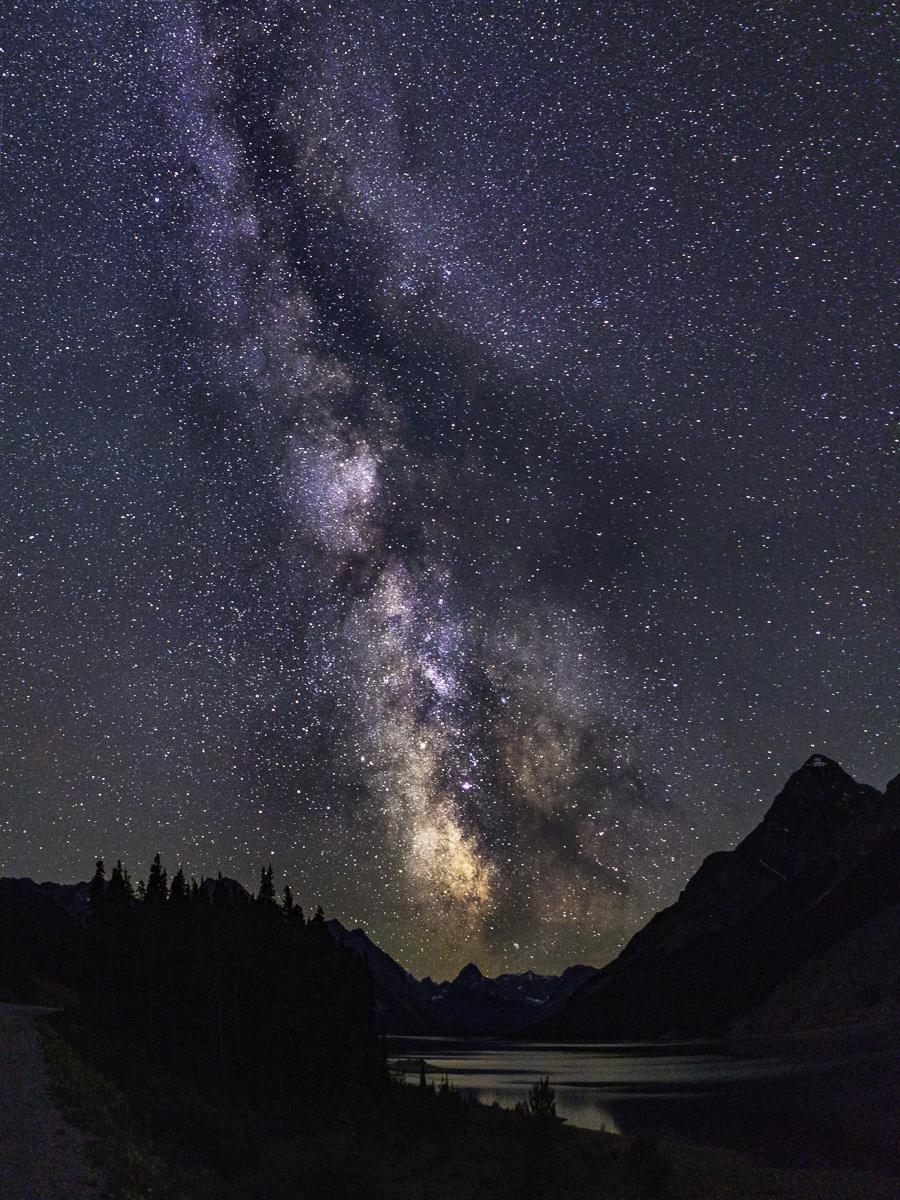Astrophotography is a specialized type of photography for recording photos of astronomical objects (the moon, for example), celestial events (eclipses, meteor showers) and areas of the night sky (the Milky Way, constellations). I’ve photographed a little of each and by far, I prefer capturing images of the Milky Way, a galaxy. With a few exceptions, astronomical photography employs long exposures since both film and digital imaging devices can accumulate light photons over long periods of time.
The basics of photographing the Milky Way are clear skies (no clouds), minimal light pollution (get away from populated areas and avoid moonlight nights), an open view of the horizon (avoid mountains) and a lens geared to gathering light quickly. There are but 5-6 nights per month when the moon is not an overwhelming presence and only 8 months per year when the Milky Way is visible from our hemisphere. That means ~40 possible opportunities annually, weather permitting. It takes very little light from communities to overwhelm the Milky Way’s pale luminance. Surprisingly, there are relatively few locations in south and central Alberta where a photographer can escape light pollution. We are able to find them with the help of online maps displaying the intensity and expanse of light sources. The wilderness area south of Canmore, along the Smith-Dorrien Trail is very good, an obvious place to look. The challenge is to find a shooting location with an open view of the horizon not obscured by all the mountains. (More on that later.)
Because the earth is rotating and the camera is moving relative to the subject, time is limited to capture the image. Once the shutter has been open beyond 25-30 seconds, the pinpoints of light are recorded as streaks of light. A “rule of thumb” is the 500 Rule (exposure duration=500/focal length of the lens). The stars are not a brilliant light source, so every effort is made to capture as much light as possible in the time available. That means a lens with a large aperture ( f/2.8 or larger), a wide angle (preferably 14-24 mm) and the camera’s sensitivity increased to ISO 1600 or greater.
Armed with this knowledge, the requisite equipment and beautiful conditions, I set out with Barry Stewart last Saturday night to photograph the Milky Way. Barry’s best known for his wildlife photography but he’s branched out into astrophotography and embraced the quest for great Milky Way photos. I credit Barry for his diligence in actually finding a shooting location in the mountains with good visibility of the Milky Way. It’s about 30 km (18 miles) south of Canmore, along the shore of the Spray Lakes Reservoir. It works because of the long reach down the lake with no mountains directly in our way for several kilometres. And, that’s where the Milky Way is located in the sky at this particular time. Scouting for a good photo location is an important aspect of getting the good shots. Great scouting, Barry!
We reached our location just before midnight Saturday, did our preparations and began some practice shots. By 2:45 am, the Milky Way had moved to the desired location, centred over the lake to the left of Cone Mountain and directly above Mount Turner in the distance. (If you look at the masthead at the top of the page, you’ll see a daytime photo I took from the same location in 2017.)
I’m including this one photograph only today, because any others I took are very similar, all taken from the same area. In the picture, the Milky Way is much brighter than what you would see with the naked eye. That’s due in part to the image being an accumulation of light over a 25 second period. The human eye takes snapshots! The image has also been brightened, contrast added and the colours enhanced in hope of making it a more interesting and dramatic photograph. The surrounding landscape is much the same as seen by the naked eye. It was dark! Depending on the screen you are using to view the picture you may see some detail I was able to bring out from the shadows. We could see the lake in the darkness, perhaps not as brightly as in the photographs.

We have a few more night time projects in mind later this summer. We’ll likely move out onto the prairies to be assured of good view of the horizon, as the Milky Way shifts further to the west . Let’s hope for clear skies!

Fabulous photo, Pete!
C E L E S T I A L !!!!!!!!!!!??
Peter:
How beautiful is this?
Hi to Rolande
Kary
Well done! A great shot.
Peter.
Incredible picture.
Murray